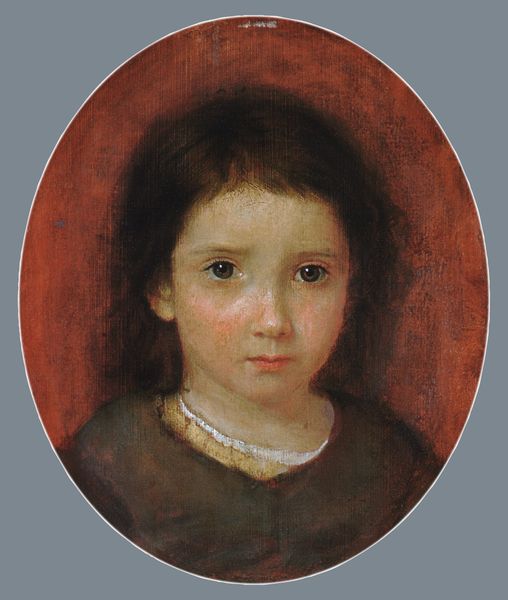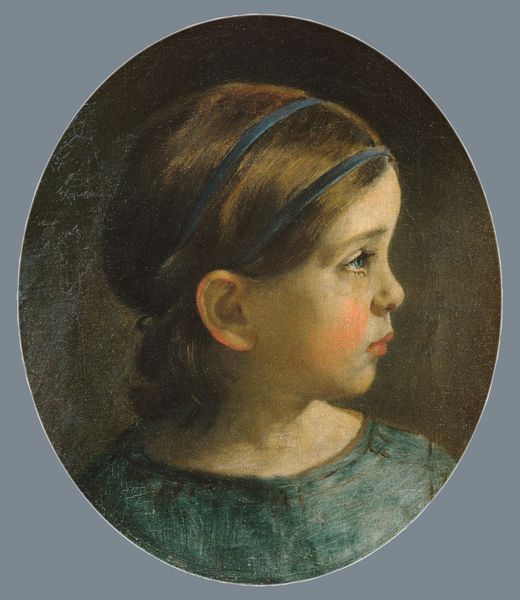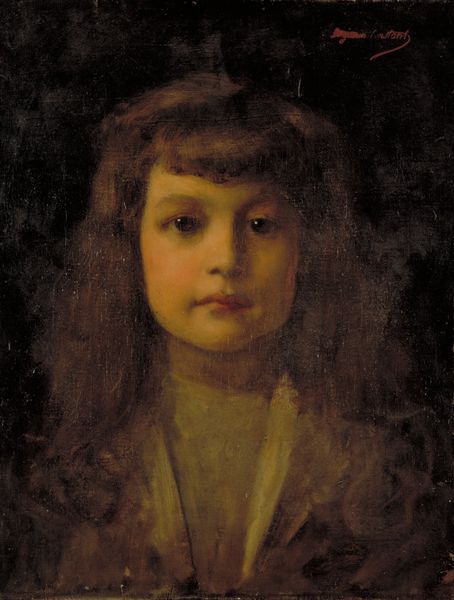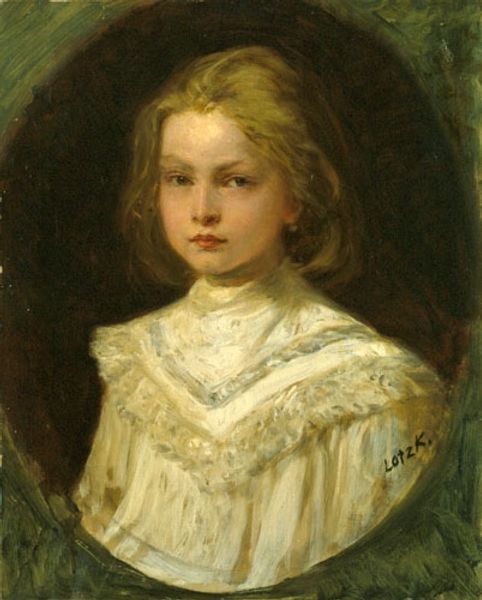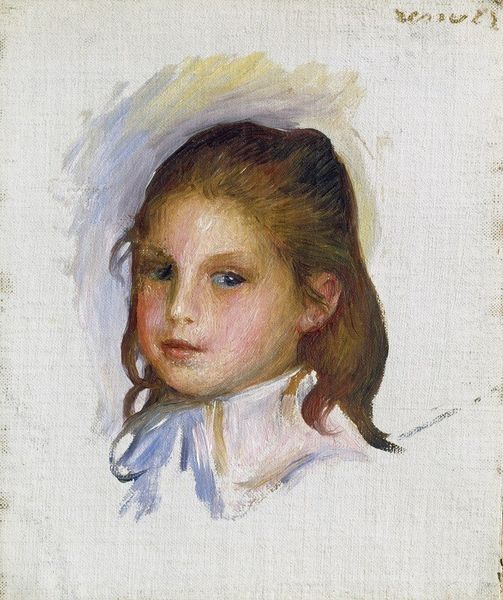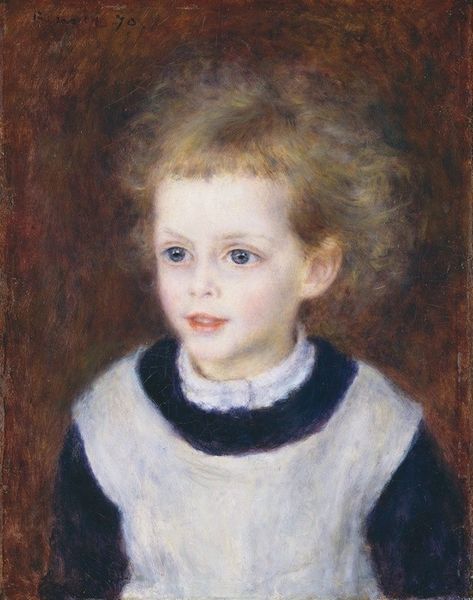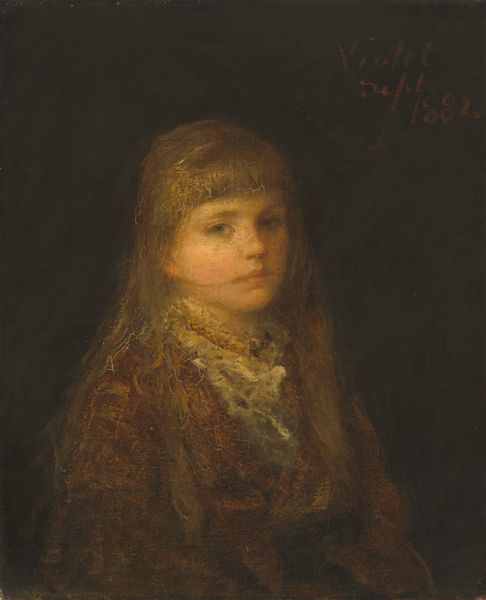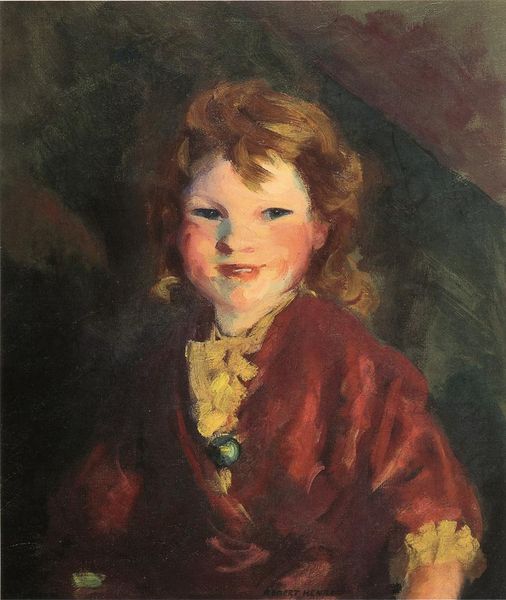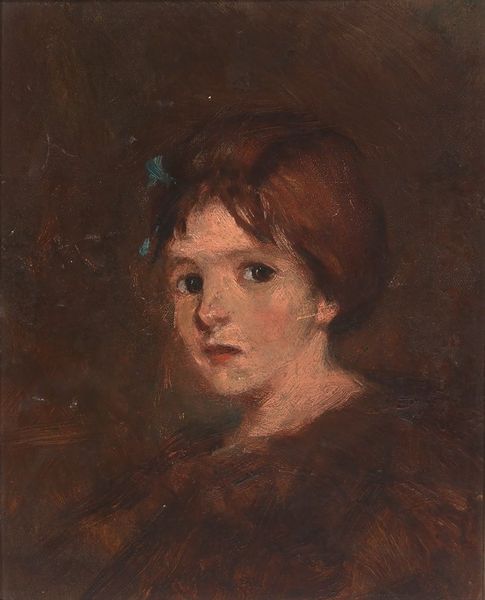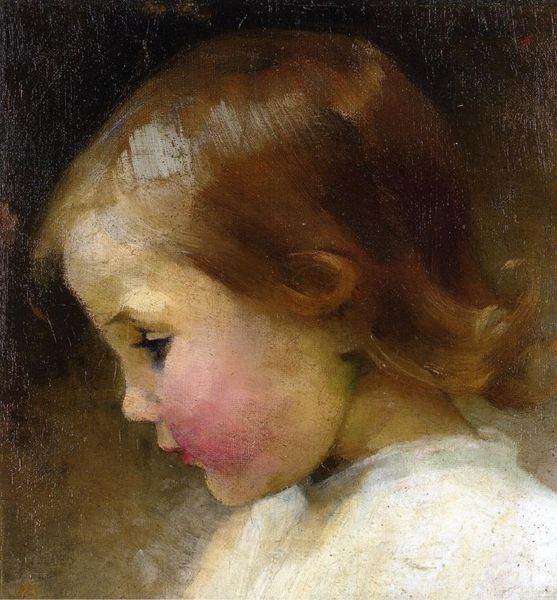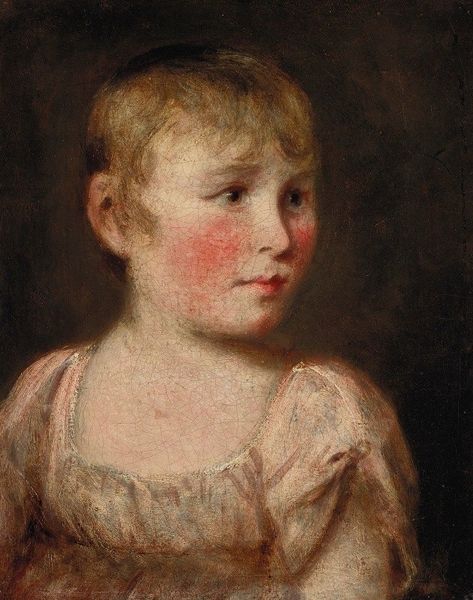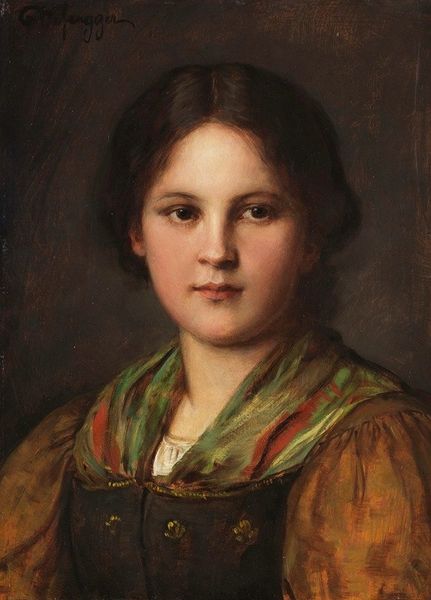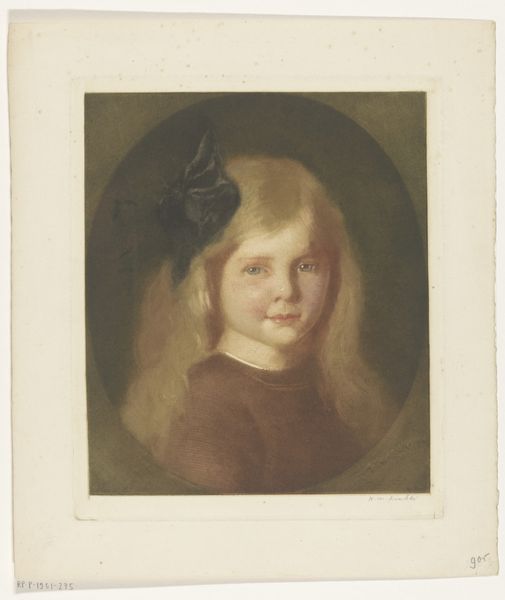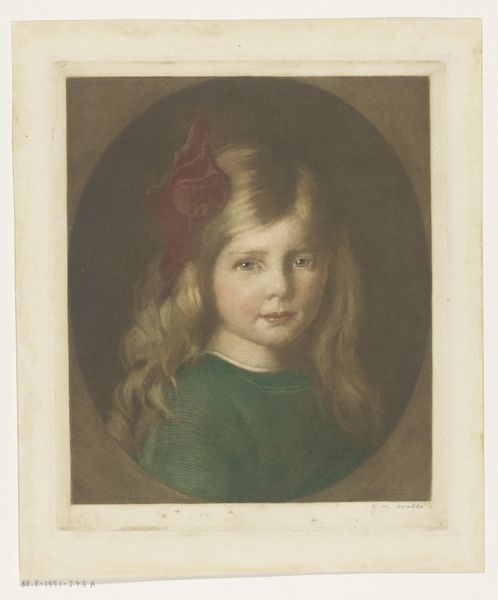
Copyright: Public Domain: Artvee
Curator: Welcome. Today, we're examining "Mädchenbildnis," or "Portrait of a Girl," rendered in 1921 by Franz von Stuck. Editor: There's a certain simplicity that strikes me immediately, despite the artist's Art Nouveau inclinations. The palette is subdued, almost muted, lending it a gentle feel. Curator: Stuck, known for his symbolism and sensuality, departs somewhat from that here. He's capturing a societal moment where a sentimental focus on childhood was very much a component of national identity. This wasn't merely an image, it was also about a visual assertion of cultural values through the art itself. Editor: The dark background intensifies that. It isolates the girl, allowing us to really analyze her features—the artist makes superb use of chiaroscuro to give her form volume. And that oval framing, the trompe-l'oeil effect, it enhances the feeling that she is captured like an effigy, a holy relic. Curator: Precisely, it's staged. These depictions served specific cultural roles and communicated ideologies during that interwar period. Stuck isn't just painting a pretty face, he's contributing to the visual vocabulary around family and childhood. These idealized portraits were commonly seen at galleries. Editor: But also technically, consider the application of the oil paint, though thinly applied to the child's face it creates smooth transitions of skin tone around the face while he is applying rough paint and texture to the dress in almost haphazard ways that highlight her presence in the image, or that of the artist, creating her as an active agent instead of just something to gaze upon. Curator: That tension is so compelling—on one hand the intimacy of childhood on display but it can not escape from the political climate the paintings represent. Editor: Yes, the way Stuck plays with realism makes it fascinating on many levels. Curator: Exactly. It’s a rich tapestry of skill and ideology that asks critical questions of us as viewers in the current moment. Editor: Looking deeper, this work challenges our very understanding of innocence and representation.
Comments
No comments
Be the first to comment and join the conversation on the ultimate creative platform.
